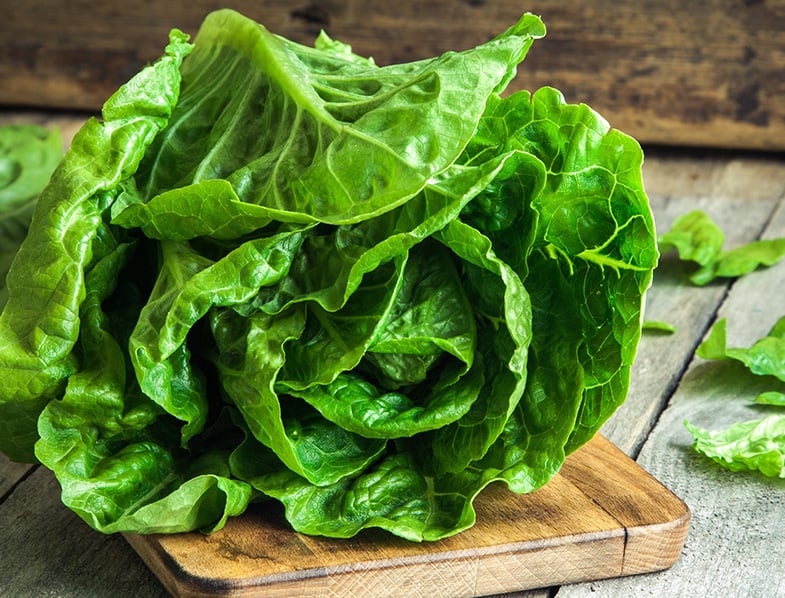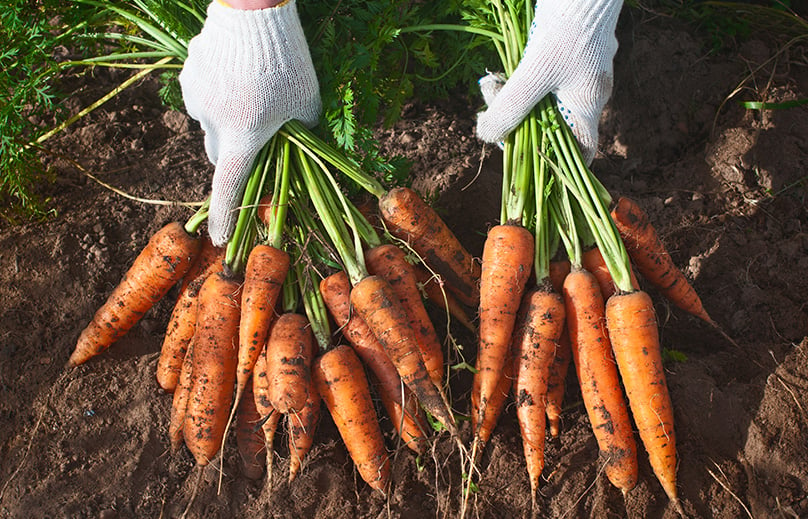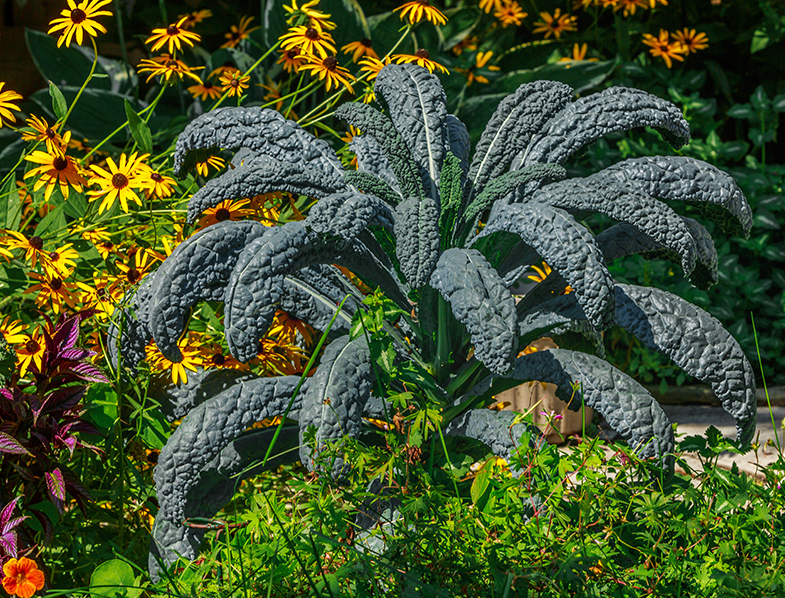Companion planting has been practiced for centuries by gardeners. It involves planting different crops next to each other so that they can benefit each other in various ways. Companion planting not only promotes healthy growth but can also aid in pest and disease control. One of the popular companion plants is nasturtium due to its various benefits. In this article, we will explore the top nasturtium companion plants.
Quick Facts
| Companion Plant | Mutual Benefit |
|---|---|
| Tomatoes | Pest repellent, similar watering requirements |
| Cucumbers | Pest protection, similar soil & sunlight needs |
| Peppers | Pest deterrence, similar soil & watering needs |
| Radishes | Pest control, similar soil & sunlight requirements |
| Zucchini | Pest repellent, similar watering requirements |
| Lettuce | Pest control, similar soil & sunlight needs |
| Beans | Shade provider, similar watering requirements |
| Peas | Pest deterrence, nitrogen supply |
| Carrots | Pest repellent, better root development |
| Spinach | Pest control, similar soil & sunlight requirements |
| Swiss Chard | Pest protection, similar soil & sunlight needs |
| Cabbage | Pest deterrence, similar soil & sunlight needs |
| Broccoli | Pest control, shade provider |
| Cauliflower | Pest protection, similar soil & sunlight needs |
| Kale | Pest deterrence, similar soil & sunlight needs |
Understanding Companion Planting
Companion planting is a sustainable way of gardening that has been practiced for centuries. It involves planting specific plants together to create a mutually beneficial relationship. By planting certain plants together, you can help them thrive and grow better. Companion planting has become popular in recent times as it has been found to be beneficial to plants in various ways.
Companion planting has numerous benefits for your garden. Here are some of the benefits:
Nutrient Sharing
Companion planting allows plants to share nutrients. Some plants have deep roots that can reach deeper soil levels and bring up nutrients that shallow-rooted plants cannot access. When these plants are planted together, the shallow-rooted plants can benefit from the nutrients brought up by the deep-rooted plants. This helps to improve the overall health of the plants and leads to better yields.
Pest Control and Repulsion
Companion planting can help to control pests in your garden. Some plants are natural pest repellents, and planting them alongside other crops can help to keep pests at bay. For example, nasturtium is a popular companion plant as it is a natural pest repellant. It reduces the prevalence of aphids, whiteflies, and squash bugs. Nasturtium also acts as a trap crop, attracting pests such as black fly and whitefly away from other plants in the garden.
Disease Control and Suppression
Companion planting can also help to control and suppress diseases in your garden. Some plants have natural disease-fighting properties that can help to keep other plants healthy. For example, marigolds are known to have antifungal properties and can help to prevent diseases such as powdery mildew and black spot.
Conservation of Garden Space
Companion planting can help to conserve garden space. By planting crops together that have different growth habits, you can make the most of the space you have. For example, you can plant tall crops such as corn alongside shorter crops such as beans. The beans will grow up the corn stalks, making use of the vertical space and leaving more room on the ground for other crops.
Encouragement of Beneficial Insects
Companion planting can also help to encourage beneficial insects in your garden. Some plants attract beneficial insects such as ladybugs and lacewings, which can help to control pests. For example, planting dill, fennel, and parsley can attract these beneficial insects to your garden.
How Nasturtiums Contribute to Companion Planting
Nasturtium is a popular companion plant as it is a natural pest repellant. It reduces the prevalence of aphids, whiteflies, and squash bugs. Nasturtium also acts as a trap crop, attracting pests such as black fly and whitefly away from other plants in the garden. Moreover, nasturtium has a deep-rooting system, bringing up nutrients from deeper soil levels, and making them available for shallower rooting plants. In addition to these benefits, nasturtium also adds a pop of color to your garden with its bright flowers.
By practicing companion planting, you can create a healthy and thriving garden that is sustainable and beneficial to both you and the environment. So why not give it a try and see the benefits for yourself?

Top Nasturtium Companion Plants
Are you looking for the perfect companion plants for your nasturtiums? Look no further! Here are the top 15 nasturtium companion plants that will not only enhance the beauty of your garden but also provide numerous benefits to your plants.
Tomatoes

Tomatoes and nasturtiums make excellent companions. Nasturtiums help repel tomato pests like aphids, whiteflies, and tomato hornworms. Conversely, tomatoes produce solanine, which nasturtiums use to their benefit as it acts as a natural insecticide against aphids.
Did you know that tomatoes and nasturtiums also have similar watering requirements? Both plants prefer consistent moisture in the soil to produce healthy, vibrant growth. Additionally, the vibrant colors of nasturtiums add a pop of color to your tomato garden.
Cucumbers

Cucumbers are great companions for nasturtiums. The pest repellant properties of nasturtiums extend to cucumbers, protecting them from damage caused by pests like cucumber beetles.
Moreover, cucumbers and nasturtiums have similar soil and sunlight requirements. Both plants prefer well-draining soil and full sun exposure for optimal growth. The bright and bold colors of nasturtiums add a stunning visual element to your cucumber garden.
Peppers

Peppers and nasturtiums are compatible companions with similar needs. Both plants prefer well-draining soil and slightly acidic conditions. Additionally, nasturtiums help deter flea beetles, aphids, and other pests that target peppers.
Peppers and nasturtiums also have similar watering requirements. Both plants prefer consistent moisture in the soil to produce healthy, vibrant growth. The vibrant colors of nasturtiums add a stunning visual element to your pepper garden.
Radishes

Nasturtiums and radishes have a mutually beneficial relationship. Radishes can act as a trap crop for flea beetles that attack nasturtiums. Also, the pungent scent of radishes discourages squash bugs, cucumber beetles, and aphids from attacking the nasturtiums.
Radishes and nasturtiums also have similar soil and sunlight requirements. Both plants prefer well-draining soil and full sun exposure for optimal growth. The bright and bold colors of nasturtiums add a stunning visual element to your radish garden.
Zucchini

Zucchini and nasturtiums are an excellent pairing, as nasturtiums repel squash bugs and other pests that can harm zucchini plants. Nasturtiums also help conserve moisture in the soil around the zucchini plants, providing necessary nutrients to the plants.
Zucchini and nasturtiums also have similar watering requirements. Both plants prefer consistent moisture in the soil to produce healthy, vibrant growth. The vibrant colors of nasturtiums add a stunning visual element to your zucchini garden.
Lettuce

Nasturtiums add a touch of colour and flavour to salads while serving as a natural pest repellant for lettuce. The peppery taste and scent of nasturtiums discourage aphids, whiteflies, and other pests that commonly affect lettuce.
Lettuce and nasturtiums also have similar soil and sunlight requirements. Both plants prefer well-draining soil and partial shade exposure for optimal growth. The bright and bold colors of nasturtiums add a stunning visual element to your lettuce garden.
Beans

Nasturtiums provide shade for beans, keeping their roots cool and moist. Additionally, nasturtiums attract predatory insects that target pests that may harm bean plants.
Beans and nasturtiums also have similar watering requirements. Both plants prefer consistent moisture in the soil to produce healthy, vibrant growth. The vibrant colors of nasturtiums add a stunning visual element to your bean garden.
Peas

Nasturtiums help deter aphids and act as a trap crop, drawing pests away from pea plants. In return, peas supply the soil in which the flowers grow with nitrogen.
Peas and nasturtiums also have similar soil and sunlight requirements. Both plants prefer well-draining soil and full sun exposure for optimal growth. The bright and bold colors of nasturtiums add a stunning visual element to your pea garden.
Carrots

Nasturtiums are beneficial to carrot plants as well. They help repel aphids and whiteflies from carrot leaves, resulting in better root development. Moreover, the deep roots of nasturtiums break up the soil, allowing carrots to grow more strongly and healthily.
Carrots and nasturtiums also have similar soil and sunlight requirements. Both plants prefer well-draining soil and full sun exposure for optimal growth. The bright and bold colors of nasturtiums add a stunning visual element to your carrot garden.
Spinach

Nasturtiums planted near spinach will act as a pest repellant for aphids and attracts beneficial insects that prey on pests that harm the spinach.
Spinach and nasturtiums also have similar soil and sunlight requirements. Both plants prefer well-draining soil and partial shade exposure for optimal growth. The bright and bold colors of nasturtiums add a stunning visual element to your spinach garden.
Swiss Chard
Nasturtiums planted near to Swiss chard will help attract predatory insects that attack pests that harm Swiss chard plants. Additionally, nasturtiums help keep the soil moist for the chard plants.
Swiss chard and nasturtiums also have similar soil and sunlight requirements. Both plants prefer well-draining soil and partial shade exposure for optimal growth. The bright and bold colors of nasturtiums add a stunning visual element to your Swiss chard garden.
Cabbage

Nasturtiums planted near cabbage will help deter cabbage worms and other pests that attack the plant.
Cabbage and nasturtiums also have similar soil and sunlight requirements. Both plants prefer well-draining soil and full sun exposure for optimal growth. The bright and bold colors of nasturtiums add a stunning visual element to your cabbage garden.
Broccoli

Nasturtiums help repel aphids and other pests that target broccoli plants. They also provide needed shade for the plants.
Broccoli and nasturtiums also have similar soil and sunlight requirements. Both plants prefer well-draining soil and full sun exposure for optimal growth. The bright and bold colors of nasturtiums add a stunning visual element to your broccoli garden.
Cauliflower

Nasturtiums planted near cauliflower help protect the plant from pests like aphids and attract beneficial insects that prey on pests that destroy the plant. Nasturtiums also help keep the soil moist around the cauliflower plants.
Cauliflower and nasturtiums also have similar soil and sunlight requirements. Both plants prefer well-draining soil and full sun exposure for optimal growth. The bright and bold colors of nasturtiums add a stunning visual element to your cauliflower garden.
Kale

Nasturtiums planted near Kale will deter pests such as cabbage butterflies and whiteflies.
Kale and nasturtiums also have similar soil and sunlight requirements. Both plants prefer well-draining soil and full sun exposure for optimal growth. The bright and bold colors of nasturtiums add a stunning visual element to your kale garden.
Now that you know the top 15 nasturtium companion plants, it’s time to start planning your garden. Remember, companion planting is an excellent way to promote healthy growth and protect your plants from pests. Happy gardening!
Conclusion
Nasturtiums are beneficial to plants for a multitude of reasons mentioned above; hence they make great companion plants. Incorporating them into your garden can enhance your garden’s health while providing a beautiful addition with their colourful flowers. Try planting these 15 nasturtium companion plants together to enjoy a thriving and healthy garden.
Nasturtium FAQS
What should you not plant next to nasturtiums?
There are no specific plants that nasturtiums have a detrimental relationship with. However, be cautious when planting nasturtiums near plants that require dry conditions, as nasturtiums prefer consistent moisture.
What are the best companion plants for nasturtiums?
Some of the best companion plants for nasturtiums include tomatoes, cucumbers, peppers, radishes, zucchini, lettuce, beans, peas, carrots, spinach, Swiss chard, cabbage, broccoli, cauliflower, and kale.
Can nasturtiums grow with other plants?
Yes, nasturtiums can grow with other plants and are often used as companion plants due to their pest-repellent properties and ability to attract beneficial insects.
Where is the best place to plant nasturtiums?
Nasturtiums grow best in well-draining soil with full sun or partial shade exposure. They prefer a slightly acidic to neutral soil pH and can be planted in garden beds, borders, or containers.
Do nasturtiums like sun or shade?
Nasturtiums can grow in both sun and shade, but they prefer full sun or partial shade exposure for optimal growth.
Can lavender and nasturtium grow together?
Lavender and nasturtium can be planted together, but keep in mind that lavender prefers drier soil conditions, while nasturtiums thrive in consistently moist soil. Ensure that both plants’ individual needs are met when planting them together.
